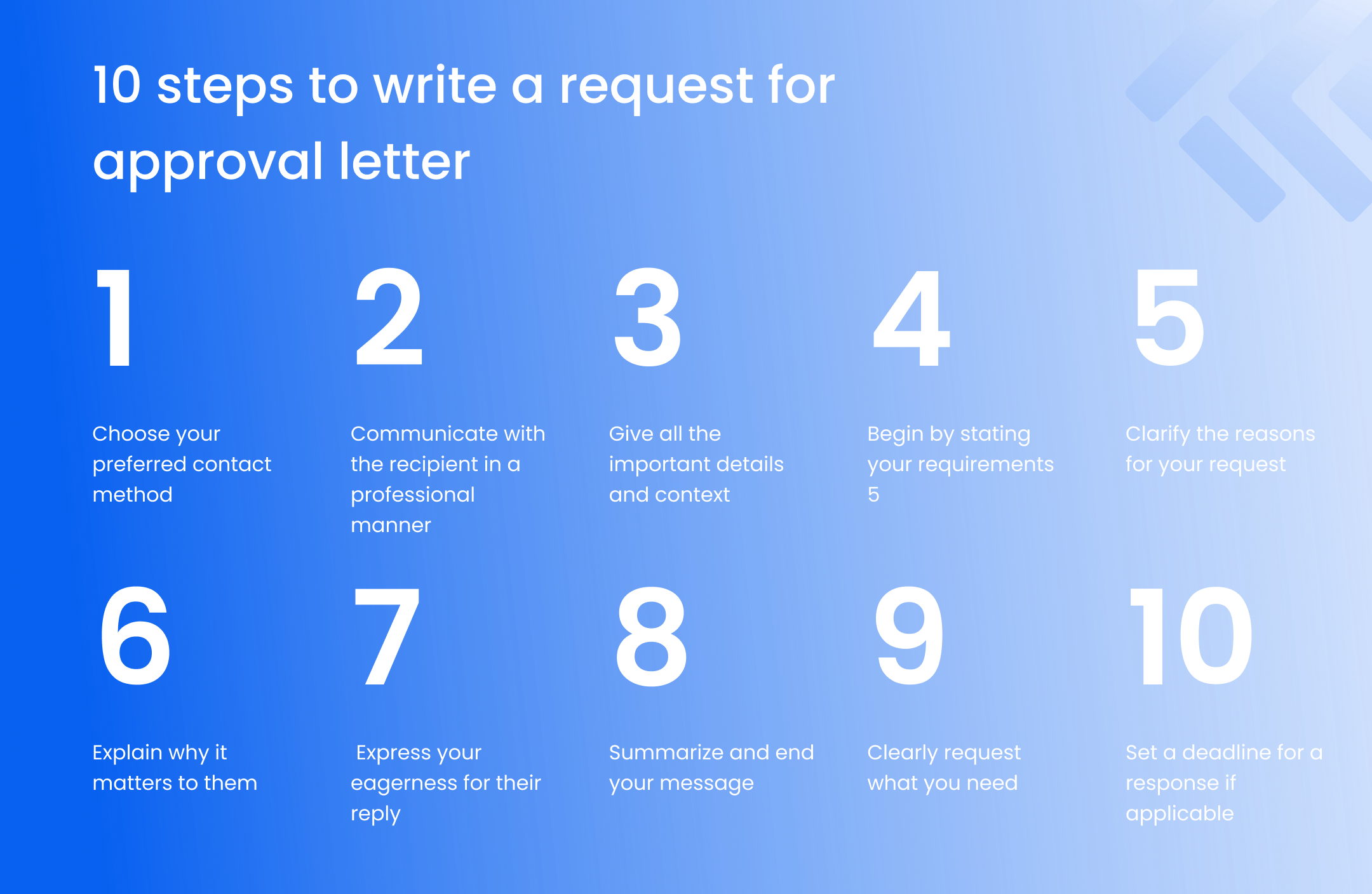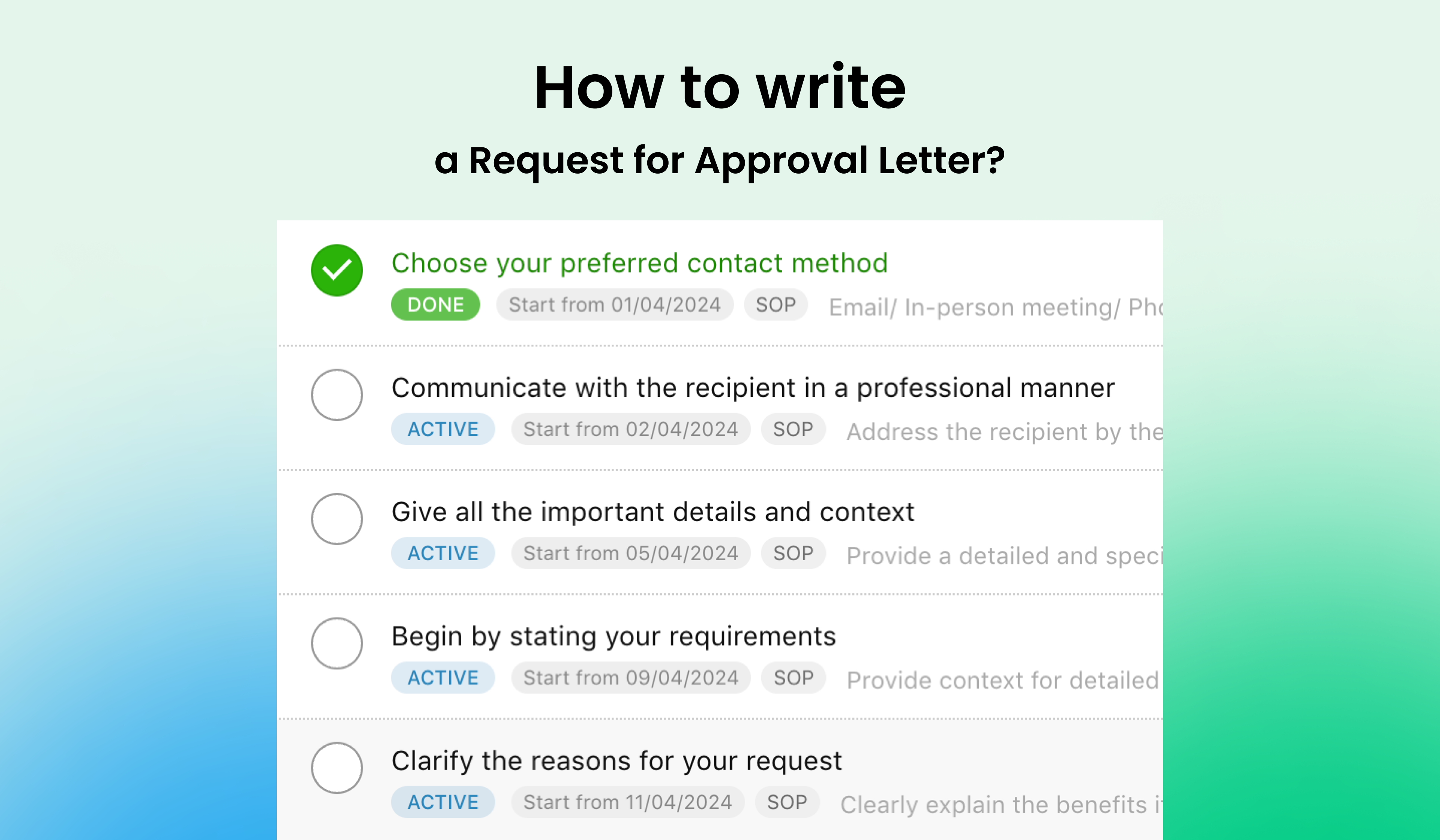Waiting too long for approvals can slow down your project. To keep things moving smoothly, a well-written request for approval letter is key.
This letter is like a polite reminder in a professional way to get things moving and briefly explain what you need approval for and why. Many companies even have templates or sample letters available to make this process even easier. By clearly outlining your request and utilizing these resources, you can ensure everyone is on the same page, avoid delays, and showcase your professionalism. This keeps projects on track and strengthens your reputation within the organization.
Rework makes things easier by simplifying requests. With simple forms, quick approvals, and easy collaboration, it becomes the top choice for making decisions better and faster. In the next parts, we'll look at why asking for approval is important, the key steps in writing a good approval letter, and how Rework helps in making these processes smoother for better decisions.
What is a request for an approval letter?
A letter asking for approval is when you seek permission from a supervisor, manager, or another relevant person before moving forward with a task or project. For instance, you may ask a client for approval if their initial budget needs to be exceeded, or you might seek approval from a manager to allocate additional resources to a project. Whenever there's a need to modify an existing agreement, a request for approval is essential to update the terms.
A request for approval is used in a wide variety of cases, including:
-
Asking for the go-ahead on a proposal
-
Checking if it's fine to wrap up a task or project
-
Requesting more time for a deadline
-
Seeking approval to adjust the budget
-
Creating something fresh, like a social media post or a marketing campaign
Why do Approval Letters Matter?
Asking for approval is important at work. It helps in clear communication, avoids confusion, and makes things more professional. Understanding why it's crucial shows how it keeps things clear, avoids misunderstandings, and makes work more organized.
Below are some other reasons why it's crucial to submit a request for approval:
-
Approval letters ensure everyone is on the same page, preventing future problems.
-
They keep work moving forward during decision-making, avoiding delays.
-
Having details in writing creates a clear record, useful for resolving disagreements later on.
-
Approval letters demonstrate trustworthiness and professionalism.
-
Clear requests make you look good, fostering positive relationships for future collaboration.
10 steps to write a request for approval letter
When writing a request for approval letter, it's essential to follow a set of steps to ensure professionalism and effectiveness. By carefully crafting your message, you not only communicate your needs clearly but also demonstrate respect for the recipient's time and consideration. Let's delve into the key steps that will help you navigate this process with finesse, making your request for approval a polished and well-received communication.
1. Choose your preferred contact method
To request approval from stakeholders, choose the most suitable method. Email is a formal and convenient method, while in-person meetings are a personal touch that shows value for their time and input. Phone calls are for urgent requests, where a quick response is needed. Regardless of the channel, provide a summary of the purpose of the request, key details, what needs approval, and by when. Leave room for questions and clarification to make the approval process as seamless as possible for the stakeholders.
2. Communicate with the recipient in a professional manner
Address the recipient by their formal title and last name, avoiding nicknames or first names unless established. Start the request politely with a summary of your purpose and the request's purpose. Use a respectful tone to show value for their time and input. End the request with a polite request for additional details or questions. Sign off with your full name and role, using a formal closing like "Best regards" or "Sincerely." A professional and respectful tone increases the likelihood of the recipient granting the request.
3. Give all the important details and context
Provide a detailed and specific request, including background information, details about the project, timeline, and context. Avoid vague language and generalizations, and attach any necessary documents or presentations. Explain your request as if you're starting from scratch, building trust, and showing thoroughness. This transparency will make the recipient more comfortable approving, so be sure to spell out all relevant details and answer any questions.
4. Begin by stating your requirements
State the purpose and main points of the request upfront. Provide context for detailed information, explaining the campaign's purpose, target audience, marketing channels, and budget implications. Balance confidence with humility, focusing on the benefits the recipient's organization or team will gain from approval. Emphasize the potential benefits for all involved, while maintaining a humble yet optimistic tone. This will help build the recipient's confidence in granting the request.
5. Clarify the reasons for your request
To convince a recipient of a request for approval, clearly explain the benefits it will bring to their team, division, or organization, potential risks, and mitigation plans. Highlight the timing factors that make approving the request worthwhile. Support your explanations with facts and data, and avoid blaming others for delays. Focus on the positive outcomes and responsible preparation steps.
6. Explain why it matters to them
Explain how granting a request will benefit the recipient personally by making their job easier, improving outcomes, or advancing initiatives. Avoid sounding entitled or demanding, and focus on establishing empathy for their perspective and priorities. Connect approval to their objectives and priorities, demonstrating empathy and understanding. This approach can help the recipient achieve their goals and make their job easier.
7. Express your eagerness for their reply
Express gratitude for the recipient's time and attention in reviewing your request, regardless of the outcome. Even if approval is denied, it helps maintain a positive relationship. If approved, express enthusiasm for the opportunity and trust in your commitment to follow through. Consistent appreciation builds goodwill, benefiting future requests and strengthening working relationships.
8. Summarize and end your message
Thank the recipient for reviewing your request, restate the outcome and next steps, and express your appreciation for the opportunity to make your case. This sincere note leaves a positive impression and reinforces professionalism and collegiality. If approval is granted, your closing statement provides an opportunity to express enthusiasm.
9. Clearly request what you need
Be straightforward and assertive by directly asking for what you need from the recipient. For example:
"Therefore, I kindly request your approval to proceed with the project as outlined above. Please let me know if you require any further clarification or information."
10. Set a deadline for a response if applicable
Setting a clear deadline can help motivate the recipient to respond on time. For example:
"I would appreciate hearing from you by this Friday so I can move forward accordingly. Let me know if this timeline would not work for you."

10 steps to write a request for approval letter
Conclusion
In conclusion, crafting a well-thought-out request for approval letter is a crucial step in ensuring the smooth progress of your projects. By adhering to the outlined steps, you can communicate effectively, showcase your professionalism, and obtain timely approvals. Remember to maintain a respectful and positive tone, providing all necessary details and context to facilitate a clear understanding for the recipient.
Following these guidelines will not only keep your projects on track but also contribute to building strong and positive relationships within your organization. Your proactive and considerate approach will set the stage for successful collaborations and enhance your professional reputation.


/Blog%20Post/cta-image.png)
/Blog%20Post/sharp_close_black_36pt_2x.png)
.jpg)